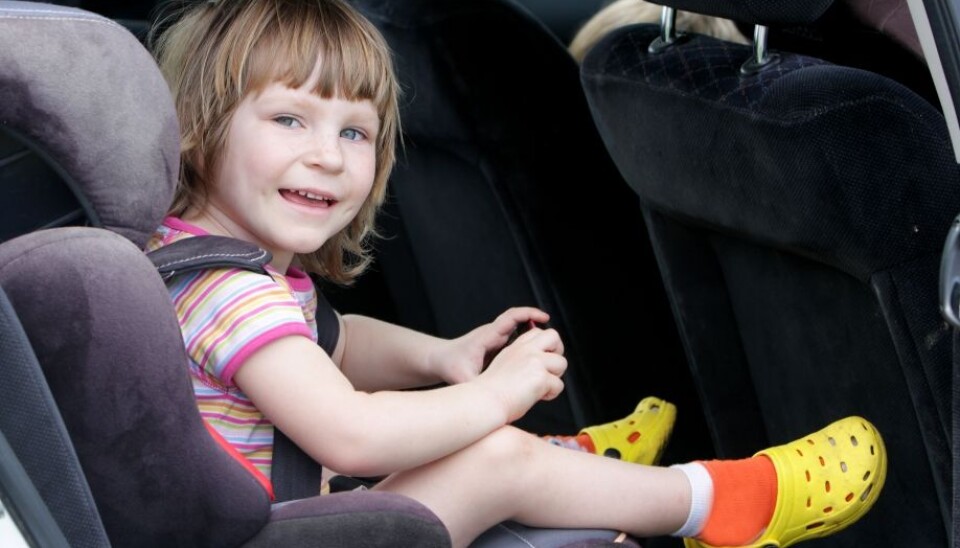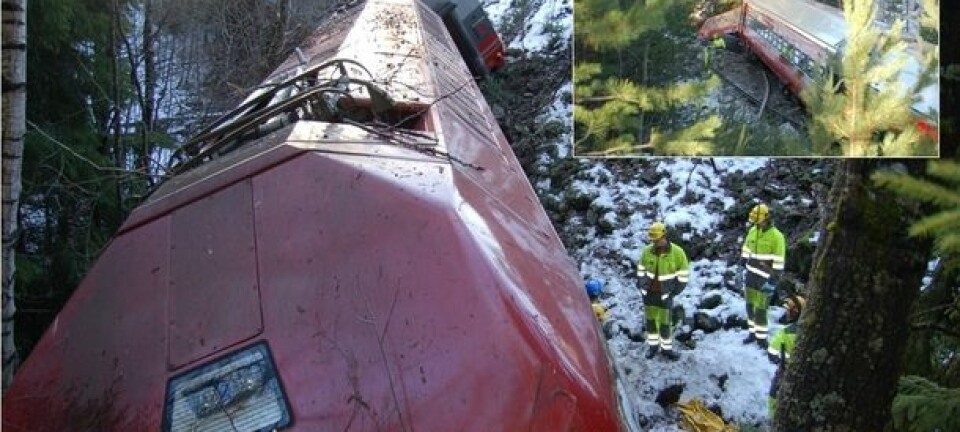
Kids aren’t dummies − back seats are still unsafe
Swedish research shows that children aged four to twelve are not sufficiently protected in the rear seats of our cars.
Traffic fatalities have dropped in the Nordic countries, but road accidents are still the major cause of child deaths and long-term health problems from brain and neck injuries, according to a doctoral thesis at Sweden’s Karolinska Institutet (KI).
“Children aged four to twelve who sit facing forwards, have been neglected in car safety. The focus has been on tots, whose car seats face backwards,” says Katarina Bohman of KI’s Department of Clinical Neuroscience.
Generally, adults in the front seats are best protected, with their advanced seatbelts and airbags.
Safety features in cars are mostly adapted for adults, both in legislation and in the standards of the automotive industry.
Tested children, not dummies
Bohman’s study was comprised of 2,619 children aged four to twelve who had been injured in crashes and had either used a car seat or a booster cushion in the back seat.
“Most of us tend to think that modern vehicles are safe for everyone, but that’s not the case for kids. We see children suffering brain injuries in collisions because their heads slam against the back of the seat in front of them or against the side window of the car,” says Bohman.
She works as a research engineer for the Swedish car safety firm Autoliv.
Bohman thinks that simulated crash tests that use child-sized dummies are not realistic enough. Real children don't sit in the same positions as the dummies, particularly when a car is swerving violently.
“Crash-test dummies are restrained in their car seats during simulated crashes and thus often escape injury. But when we conducted driving tests and filmed buckled-up children while cars swerved in pre-crash manoeuvres, we saw that seatbelts slipped. In some cases the shoulder strap came off completely,” says the researcher.
If the seatbelt isn’t correctly fitted, the child will not be sufficiently restrained. Bohman says this shows how important it is to conduct tests that provide an accurate picture to enable the development of sufficient backseat safety measures for kids.
Kids get whiplash too
According to Statistics Norway, 45 children up to age 15 have been severely injured in traffic in Norway in the past five years. Eight died.
“It surprised me that three percent of all the children in my study suffered permanent injuries from whiplash. These kinds of injuries are generally only linked to adults,” says Bohman.
A lack of safety measures, and the faulty installation and use of safety equipment in cars are all common causes of children’s injuries.
“Another problem is that safety equipment, such as a child car seat, is considered extra equipment in cars. These are developed separately and are not a natural, integrated part of the car. Our studies showed that if a booster cushion is built-in, it reduced the risk of faulty use from 77 percent to four percent, compared to traditional loose booster cushions,” stresses Bohman.
She is committed to safety issues regarding kids in the back seat. And she has concrete proposals for improvements.
“This must be given priority on all levels – also with regard to legislation for the major car companies. We need much more than statutes mandating the use of restraint systems for children in cars. The basic characteristics of the cars need to be included.”
“Safety equipment should be adjusted to and purpose-built into each type of car. Viable safety equipment that is currently used in the front seat could be moved back. As customers we should be demanding better safety features for children in the back seat,” she concludes.
---------------------
Read the Norwegian version of this article at forskning.no
Translated by: Glenn Ostling









